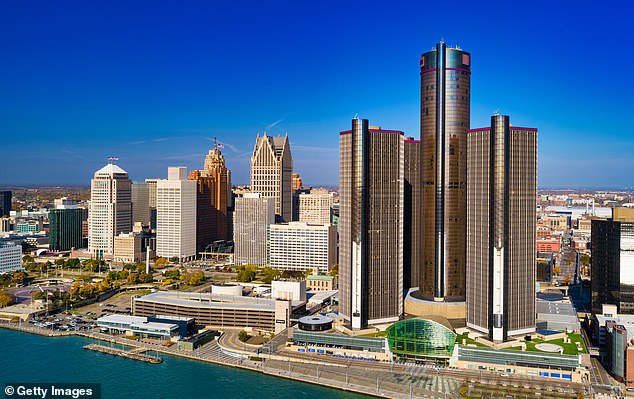REVEALED: The five US cities hit hardest by inflation – and where prices are rising slowest
A new study has named the top five U.S. cities most affected by inflation, as well as the five cities where prices aren’t rising as quickly.
According to a recent study from WalletHub, Dallas, Detroit, Honolulu, San Francisco and Seattle are the cities where residents are feeling the impact of inflation the most.
The findings of the study were based on key inflation figures within 23 major metropolitan statistical areas in conjunction with the most recent data, two months ago data and one year ago data from the Consumer price index.
Although inflation stood at 3.3% nationally in May compared to last year, some cities saw stronger price increases.
According to a WalletHub survey, Detroit (3.5%), San Francisco (3.8%), Seattle (4.4%), Dallas (5.0%) and Honolulu (5.2%) all had higher inflation rates.
According to a recent study by WalletHub, Dallas, Detroit (pictured), Honolulu, San Francisco and Seattle are the cities where residents are feeling the impact of inflation the most.

On the other hand, some cities have barely felt the impact of inflation, including San Diego, Atlanta, Denver, Minneapolis and Tampa
On the other hand, some cities have barely felt the impact of inflation, reporting increases between 1.8% and 3.2%. These cities include San Diego, Atlanta, Denver, Minneapolis and Tampa.
Dallas is experiencing particularly high inflation, partly caused by a lack of available housing. This shortage is driving up the costs of rent and mortgages, said Dean Stansel, a research economist at Southern Methodist University. CBS Moneywatch.
The influx of new residents – 150,000 between July 2022 and July 2023 – has outpaced the construction of new homes, creating a competitive housing market.
“Government restrictions on new home construction are making it difficult for supply to keep up with demand,” Stansel said. “That housing shortage is driving prices higher than they otherwise would have been.”
Minimum wage increases resulting in higher labor costs for local businesses is another factor why cities, like Seattle, are especially feeling the effects of inflation.
“Those higher labor costs lead to higher prices for the production of companies that use minimum wage labor, such as fast food restaurants and supermarkets,” Stansel said.
‘These higher prices for cheap food are especially burdensome for people with a low income who have difficulty making ends meet.’
The Federal Reserve decided to keep its key interest rate steady and announced a more cautious approach to cutting rates after the latest CPI data was released
While they expect a single rate cut this year, the Fed has not revealed when the rate cut will occur.
The data also showed that prices of airline tickets, furniture, clothing, new vehicles, energy and recreation fell in May, helping to keep inflation at bay.
However, housing costs increased for the fourth month in a row, by more than 0.4%.
Included in the higher prices are medical care, used cars and trucks, education costs, as well as food outside the home.
According to economists, two of the biggest factors holding back inflation from falling are the costs of shelter and fuel.

The influx of new residents in Detroit (pictured) has outpaced the construction of new homes, creating a competitive housing market

Minimum wage increases that result in higher labor costs for local businesses are another factor why cities are especially feeling the effects of inflation.
“The expectation is that inflation in these areas should eventually decline as these price effects play out in different markets, although this will take longer than many initially predicted,” said Grant Black, an economist at Lindenwood University, in the study. WalletHub.
“The expectation is that inflation in these areas should eventually decline as these price effects play out in different markets, although this will take longer than many initially predicted,” said Grant Black, an economist at Lindenwood University, in the study. WalletHub.
‘Fortunately, recent inflation data shows that food and fuel prices have started to decline modestly, which is a benefit to consumers’ budgets.’
